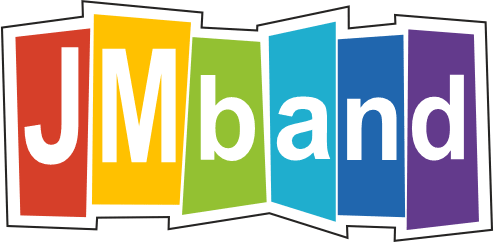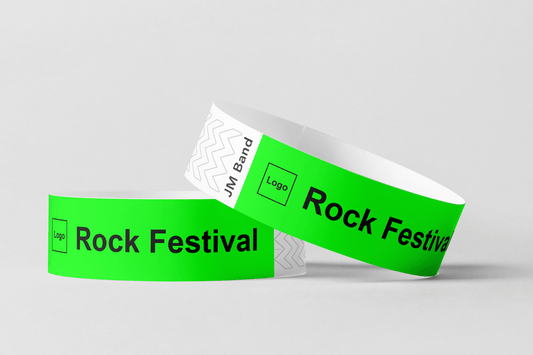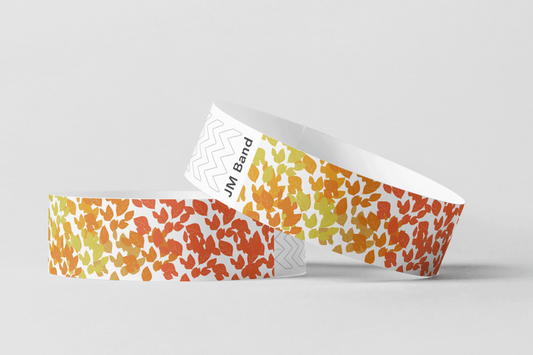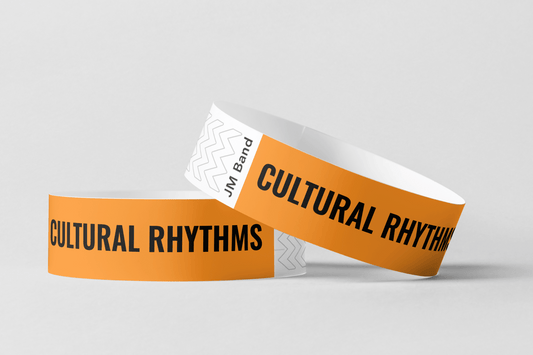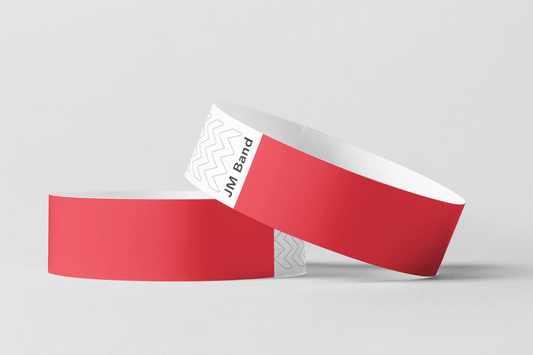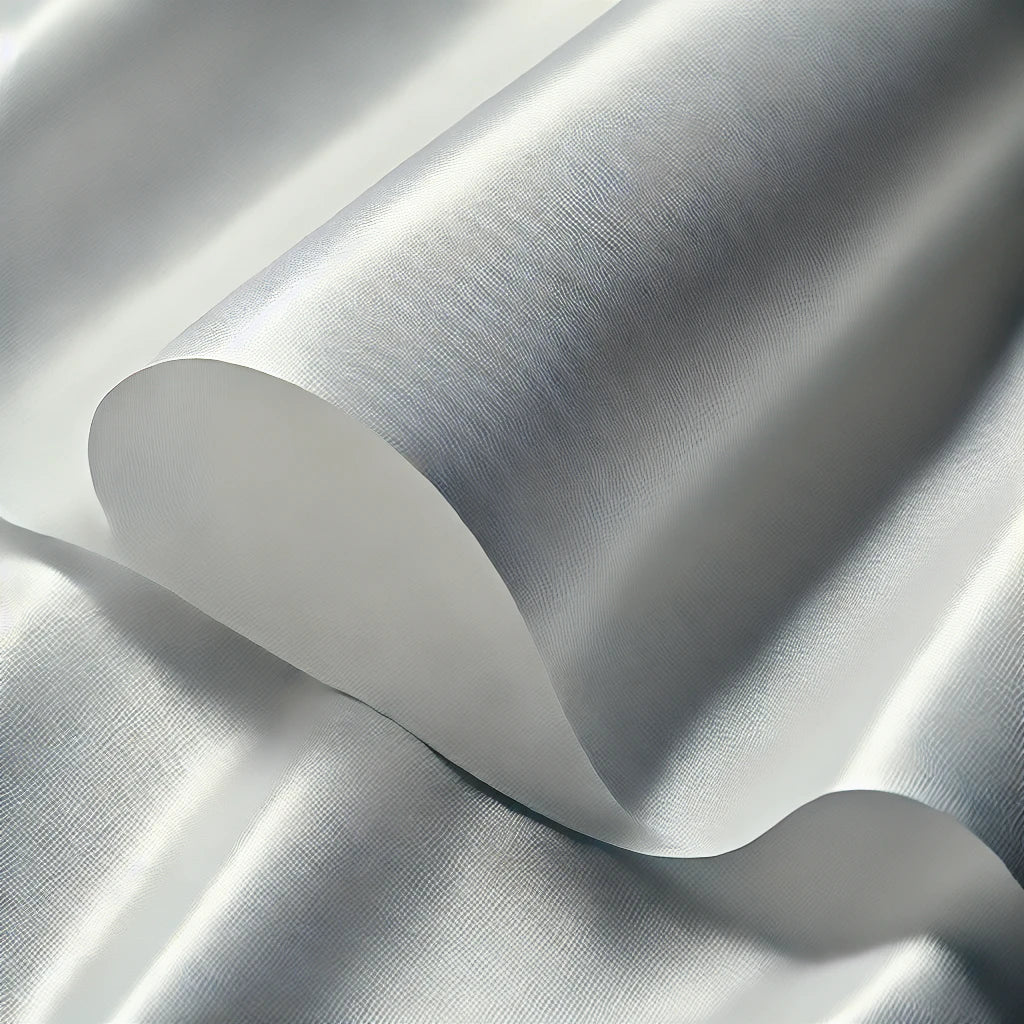
Wat is Tyvek-materiaal?
Wilt u meer weten over Tyvek en hoe u het kunt gebruiken? Dan bent u hier aan het juiste adres.
Wat is Tyvek?
Tyvek is een uniek en veelzijdig synthetisch materiaal dat bekend staat om zijn sterkte, lichtheid en bestendigheid tegen water en chemicaliën. Het is gemaakt van polyethyleenvezels, een soort thermoplast, en het materiaal is zowel lichtgewicht als duurzaam, waardoor het populair is voor een breed scala aan toepassingen. Tyvek is een non-woven materiaal dat is geproduceerd van polyethyleen met hoge dichtheid (HDPE). Dit betekent dat het niet is geweven zoals traditioneel textiel, maar in plaats daarvan bestaat uit een continue massa van fijne vezels die door hitte en druk aan elkaar zijn gebonden. Dit geeft Tyvek zijn unieke eigenschappen: het is waterbestendig, maar laat tegelijkertijd vocht en damp door, waardoor het ademend is.
Het is ook bestand tegen scheurkrachten, UV-straling en chemische stoffen. De productie van Tyvek begint met het smelten van polyethyleen. Het materiaal begint als kleine korrels van polyethyleen met hoge dichtheid, die worden verhit totdat ze smelten tot een vloeibare vorm. Dit gesmolten polyethyleen wordt vervolgens door fijne spuitmonden geperst, waardoor vezels ontstaan die snel afkoelen en stollen als ze koude lucht ontmoeten. Deze vezels zijn extreem dun, veel fijner dan haar, en vormen de basis van Tyvek. De vezels worden vervolgens verzameld tot een samenhangend vel, dat onder hitte en druk aan elkaar wordt gehecht. Omdat het materiaal niet geweven is maar bestaat uit samengeperste vezels, krijgt het zijn non-woven eigenschappen, waardoor het zowel lichtgewicht als ongelooflijk duurzaam en scheurbestendig is. Zodra de vezels zijn gehecht, kan het materiaal verder worden behandeld om specifieke eigenschappen te geven, zoals glans, textuur of flexibiliteit, afhankelijk van het gewenste eindgebruik.
Tyvek staat bekend om verschillende eigenschappen die het geschikt maken voor veel verschillende toepassingen. Het is waterbestendig maar toch ademend, dus het laat geen vloeistoffen doordringen maar laat damp door. Dit maakt het ideaal voor producten waarbij bescherming tegen water belangrijk is, maar waar ventilatie nog steeds vereist is. Het materiaal is ook lichtgewicht en scheurbestendig, wat betekent dat het aanzienlijke belastingen en scheurkrachten kan weerstaan zonder zwaar te zijn. Bovendien is Tyvek bestand tegen veel chemicaliën en oplosmiddelen, waardoor het geschikt is voor industriële en veiligheidstoepassingen. Het is ook UV-bestendig, wat betekent dat het langzaam afbreekt bij blootstelling aan zonlicht, waardoor het perfect is voor buitentoepassingen zoals bouw of verpakking. Tot slot is Tyvek recyclebaar. Omdat het een thermoplastisch materiaal is, kan het worden gesmolten en gerecycled, waardoor het een relatief milieuvriendelijke optie is wanneer het op de juiste manier wordt weggegooid en gerecycled.
Dit productieproces en de synthetische oorsprong van het materiaal maken het mogelijk om een materiaal te creëren dat functionaliteit en duurzaamheid combineert en kan worden aangepast aan veel verschillende behoeften. Tyvek is daardoor een onmisbaar onderdeel geworden van veel industrieën, variërend van bouw tot beschermende uitrusting en creatieve toepassingen zoals kunst en design.

Eigenschappen van Tyvek - Duurzaamheid, waterafstotendheid en ademend vermogen
Tyvek staat bekend om een aantal eigenschappen die het een populair materiaal maken in veel industrieën. De belangrijkste hiervan zijn de duurzaamheid, waterafstotendheid en ademend vermogen, waardoor het zowel functioneel als flexibel is.
Duurzaamheid
Een van de meest prominente eigenschappen van Tyvek is de sterkte en scheur- en perforatiebestendigheid. Ondanks het lichte gewicht is het materiaal extreem duurzaam, waardoor het geschikt is voor zowel veeleisende industriële toepassingen als langdurige buitenomgevingen. Deze duurzaamheid maakt Tyvek ook een kosteneffectieve keuze, omdat het langer bestand is tegen slijtage dan veel andere materialen. Waterafstotend Tyvek is waterafstotend, wat betekent dat het effectief voorkomt dat water binnendringt. Dit maakt het ideaal voor bescherming tegen de elementen in toepassingen zoals bouw en verpakking. Terwijl het beschermt tegen water, blijft het materiaal relatief licht en flexibel, waardoor het gemakkelijk te gebruiken is in veel verschillende industrieën.
Ademend vermogen
Hoewel Tyvek water afstoot, is het ook ademend, wat betekent dat het waterdamp doorlaat. Dit maakt het bijzonder geschikt voor de bouw, waar het vocht kan helpen reguleren door waterdamp te laten ontsnappen en tegelijkertijd te beschermen tegen regen en wind. Deze eigenschap helpt ook condensatie en schimmelgroei in structuren te voorkomen. Tyvek polsbandjes die worden gebruikt voor festivals en evenementen profiteren van deze duurzaamheid en waterafstotendheid, waardoor ze een ideale keuze zijn voor elke gelegenheid.
Voor- en nadelen van Tyvek
Tyvek is een speciaal materiaal dat in veel industrieën wordt gebruikt en zowel voor- als nadelen heeft. Een van de grootste voordelen van Tyvek is de duurzaamheid. Het materiaal is extreem sterk en scheurbestendig, waardoor het ideaal is voor zware omstandigheden zoals in de bouwsector, waar het beschermt tegen water en wind. Bovendien is Tyvek waterafstotend, waardoor het effectief voorkomt dat water binnendringt, terwijl het damp doorlaat. Deze combinatie voorkomt vochtophoping binnenin en vermindert het risico op schimmel, waardoor Tyvek perfect is voor de bouw en buitengebruik.
Tyvek is ook lichtgewicht en flexibel, waardoor het gemakkelijk te verwerken is. Het kan worden gesneden, gevouwen en gevormd zonder te breken, waardoor het geschikt is voor verschillende toepassingen. Een milieuvriendelijk voordeel van Tyvek is dat het recyclebaar is; het kan worden gesmolten en gebruikt om nieuwe producten te maken, wat helpt om afval en de impact op het milieu te verminderen. Aan de negatieve kant zijn de kosten voor het produceren van Tyvek vaak hoger dan bij sommige andere materialen, vooral voor eenmalig gebruik, wat een belangrijke factor kan zijn als het budget krap is. Hoewel Tyvek recyclebaar is, wordt het nog steeds gemaakt van plastic, wat milieueffecten kan hebben als het niet op de juiste manier wordt afgevoerd. Tot slot heeft het materiaal een beperkte hittebestendigheid, wat betekent dat het bij hoge temperaturen beschadigd kan raken en daarom niet altijd geschikt is voor extreme hittetoepassingen.
Over het algemeen combineert Tyvek veel nuttige eigenschappen zoals duurzaamheid, waterafstotendheid en recyclebaarheid. Het is belangrijk om zowel de voor- als nadelen te overwegen bij het kiezen van Tyvek voor specifieke toepassingen, zodat u de beste beslissing voor uw project kunt nemen.
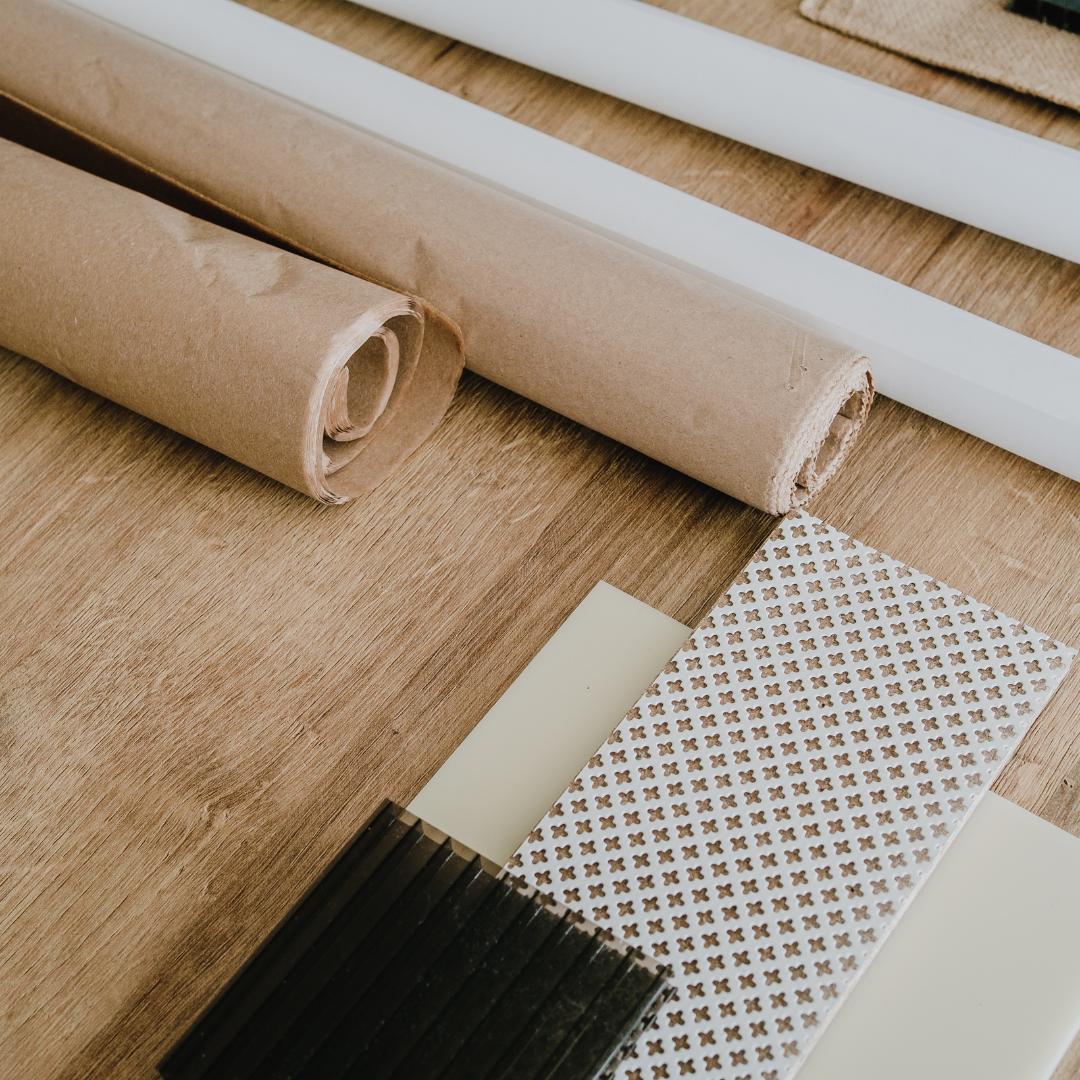
Wat is het verschil tussen Tyvek en andere materialen?
Tyvek verschilt op verschillende manieren aanzienlijk van papier, plastic en stof.Papier is over het algemeen kwetsbaar en kan gemakkelijk scheuren of verkruimelen.Het is kwetsbaar voor water omdat het vocht absorbeert en zijn structuur verliest, waardoor het onbruikbaar kan worden in vochtige omgevingen.Tyvek is daarentegen extreem sterk en scheurbestendig, wat het een superieure duurzaamheid geeft.Deze sterkte zorgt ervoor dat Tyvek bestand is tegen zware omstandigheden die papier niet kan.
Wanneer u Tyvek met plastic vergelijkt, zult u merken dat Tyvek is gemaakt van polyethyleen, wat het zowel sterk als flexibel maakt.Traditioneel plastic is vaak stijf en kan gevoelig zijn voor scheuren, terwijl Tyvek een combinatie van sterkte en flexibiliteit biedt.Bovendien is Tyvek ademender dan veel andere kunststoffen, waardoor damp kan passeren.Dit is met name belangrijk in toepassingen waarbij het nodig is om vochtophoping te voorkomen.
Wanneer u naar stof kijkt, ziet u dat Tyvek ook enkele belangrijke voordelen heeft.Stof is misschien comfortabeler en flexibeler, maar het is over het algemeen minder duurzaam en kan gevoeliger zijn voor slijtage en schade.Tyvek is waterafstotend, wat het beschermt tegen vocht en vuil, terwijl veel stoffen niet dezelfde bescherming bieden.Deze waterafstotendheid maakt Tyvek een ideale kandidaat voor buitentoepassingen waar het bestand moet zijn tegen de elementen.Tyvek vereist ook minder onderhoud;het is gemakkelijker schoon te maken en kan vaak worden afgeveegd met een vochtige doek, terwijl stoffen materialen mogelijk voorzichtiger moeten worden behandeld en gewassen.
Over het algemeen biedt Tyvek unieke eigenschappen in vergelijking met papier, plastic en stof, waardoor het een aantrekkelijke keuze is voor veel verschillende toepassingen.Elk materiaaltype heeft zijn eigen sterke en zwakke punten, maar Tyvek's combinatie van duurzaamheid, waterafstotendheid en flexibiliteit onderscheidt het van meer traditionele materialen.
Gebruik Tyvek voor uw volgende evenement of bouwproject
Bij het plannen van uw volgende project, of het nu een bouwproject of een evenement is, is het de moeite waard om Tyvek als uw materiaal te overwegen. Tyvek biedt een unieke combinatie van duurzaamheid, waterafstotendheid en flexibiliteit, waardoor het ideaal is voor een breed scala aan toepassingen. De sterke en scheurbestendige eigenschappen zorgen ervoor dat het bestand is tegen de uitdagingen die zowel de bouw als buitenevenementen met zich mee kunnen brengen.
In de bouwsector werkt Tyvek uitstekend als een beschermend membraan dat wind en water buiten houdt, terwijl damp erdoorheen kan. Dit helpt een gezond binnenklimaat te behouden en beschermt de integriteit van het gebouw. Het is niet alleen praktisch, maar ook een slimme investering die op de lange termijn geld kan besparen door schade te voorkomen.
Voor evenementen, zoals festivals, beurzen of bruiloften, is Tyvek een uitstekende optie voor polsbandjes, bewegwijzering en verpakkingen. Het is lichtgewicht, flexibel en kan worden bedrukt in levendige kleuren, waardoor het een ideale keuze is om de aandacht te trekken en een onvergetelijke ervaring te creëren voor aanwezigen. Met Tyvek kunt u een unieke visuele identiteit creëren die nog lang na afloop van het evenement zal worden herinnerd. De waterafstotende eigenschappen zorgen er ook voor dat uw materiaal in goede staat blijft, zelfs bij ongunstige weersomstandigheden.
Door Tyvek te kiezen voor uw volgende project, investeert u in een materiaal dat zowel functioneel als stijlvol is. Het vereist minimaal onderhoud en kan eenvoudig worden schoongemaakt, waardoor het een praktische keuze is voor drukke organisatoren en bouwers. Geef uw project de voorsprong die het verdient en kies Tyvek. Of het nu voor een bouwproject of een evenement is, u zult merken dat Tyvek op alle fronten presteert en helpt uw project tot een succes te maken. U zult er geen spijt van krijgen!
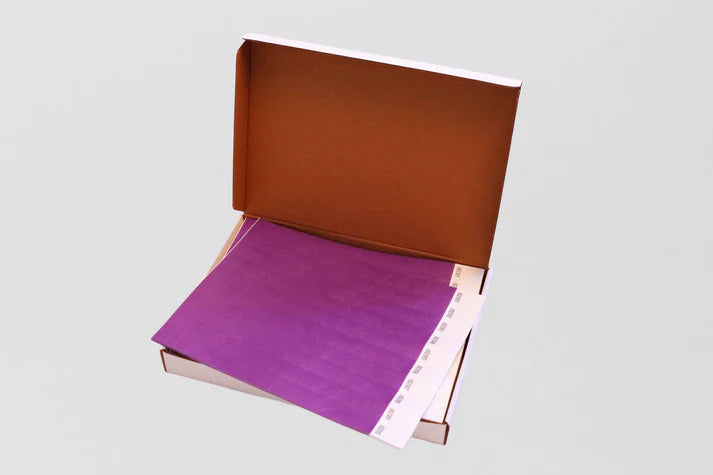
Krijg een overzicht van Tyvek-producten van ons
Ontdek ons assortiment Tyvek polsbandjes die perfect zijn voor festivals, evenementen en functies.Onze polsbandjes zijn duurzaam, waterbestendig en kunnen worden gepersonaliseerd met prints om een unieke look te creëren voor uw volgende evenement.
Tyvek polsbandjes
-
Bedrukte papieren polsbandjes
Normale prijs Vanaf €0,04Normale prijsEenheidsprijs / per -
In kleur bedrukte papieren polsbandjes
Normale prijs Vanaf €0,11Normale prijsEenheidsprijs / per -
Papieren polsbandjes Afdrukken - Informeer
Normale prijs Vanaf €0,04Normale prijsEenheidsprijs / per -
Papieren polsbandje zonder opdruk
Normale prijs Vanaf €0,03Normale prijsEenheidsprijs / per
